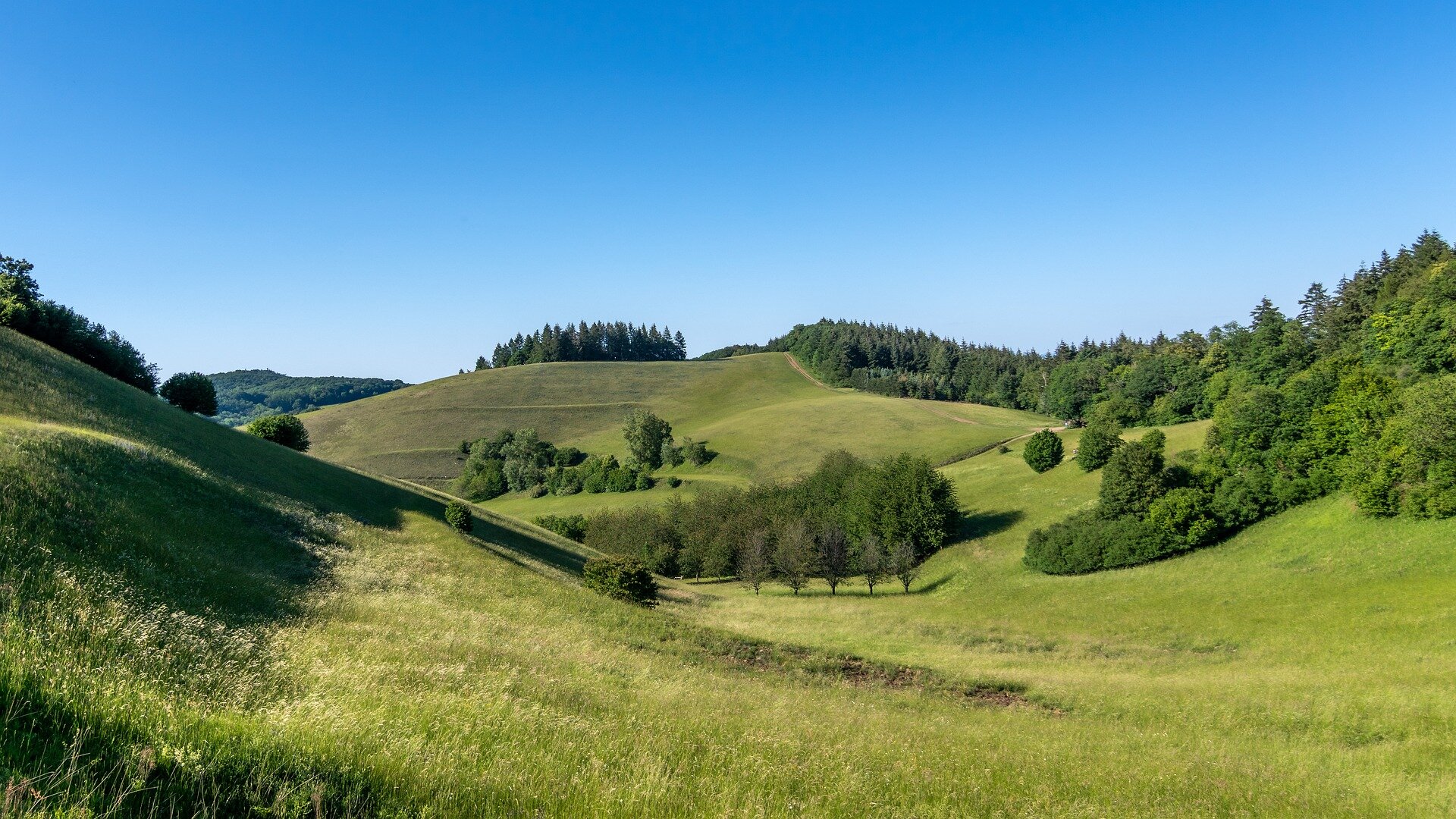
Nature and landscape
The natural features of the Kaiserstuhl are outstanding.
Visible from afar, in the middle of the Rhine plain and framed in the spring by the highest, often snow-covered low mountain ranges of the Vosges and the Black Forest - this is how the Kaiserstuhl lies elevated as a landmark and landmark on the southern Upper Rhine. The Kaiserstuhl covers an area of around 100 square kilometres.
The unique volcanic and loess landscape has been permanently settled by humans for over six thousand years. While volcanism was active 23 and 16 million years ago, the loess was only blown out of the gravel fields of the Rhine during the Ice Age and deposited here in great thicknesses of up to 60 metres. Man, together with nature, has significantly shaped the habitats of this landscape.
Its natural features are outstanding throughout Germany. Warm, dry habitats are particularly well developed. Extensive terraced vineyards with countless vine slopes, dry grasslands, colourful flowering meadows, dry downy oak forests, species-rich bushes with wild roses and bladder bushes and deep, gorge-like ravines characterise the landscape. 36 species of wild orchids are known from the Kaiserstuhl. Steep volcanic rocks are cut into the western side, dry stone walls and quarries dating back to Roman times near the Rhine are special features.
While forests are predominantly found in the summit areas on poorer soils and on climatically cool slopes, viticulture is predominant in the loess areas. 42 % or 4265 ha of the total area is covered with vines. In the Tuniberg, Gottenheim, Merdingen, Niederrimsingen and Oberrimsingen have a total of 431 ha. At the foot of the Kaiserstuhl, vegetables and fruit are grown professionally on the good loess soils. Asparagus, root vegetables, lettuce and numerous apple and fruit varieties, including figs and apricots, thrive very well here. Striking walnut trees and almond trees that blossom in early spring line the paths and streets.
A special feature are the countless slopes of the vineyards with rare animal and plant species. Bee-eaters, praying mantises, green lizards and hoopoes can be found here in particular. The striking terracing dates back to the Frankish period in the 7th century AD. The loess escarpments are the habitat of numerous wild bee species, at least 247 species are known to date, some of which are only found in the Kaiserstuhl. In addition, the bee-eater, a tropically colourful bird that has few breeding opportunities in Germany, breeds in the loess escarpments.